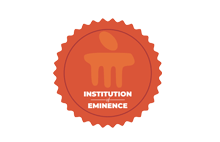Leaf-Shaped Antennas for Sub-6 GHz 5G Applications
Document Type
Article
Publication Title
IEEE Access
Abstract
The research community has been more interested in nature-inspired antenna solutions in recent years. Well-known organizations all around the world have set up labs to investigate the structures, operations, and traits of creatures that exist. One valuable method is investigating geometrical depictions of biological shapes, including fractal shapes and polarized geometry. This paper focuses on the design of a leaf-shaped antenna, its 4×1 corporate-fed array, spatial diversity Multiple Input Multiple Output (MIMO) antenna, and pattern diversity MIMO antenna, which operate in the sub-6 GHz range and specifically cover the 5G bands: N77 (3.3-4.2 GHz), N78 (3.3-3.8 GHz), and N79 (4.7 GHz) (4.4-5 GHz). The radiating element of the array is modeled like a natural plant leaf, and a defective ground plane is used to reduce size and increase bandwidth. To obtain dual band characteristics and circular polarization, a diagonal slot in the parasitic metallic elliptical disc in the ground plane is used. A corporate feed network is used in a 4×1 array for excitation to radiating elements and to generate high gain performance by ensuring little reflection loss and good impedance matching. An electromagnetically coupled hexagonal array is used in a T shape between the inter-elements to reduce mutual coupling and increase the gain of the 4×1 array. The proposed multiband antenna array reflects less than 10% of the power between 3.4-4 GHz and 4.51-5.2 GHz and achieves a maximum gain of 6.55 dB with variations of less than 3 dB across the full operating band. MIMO configurations are required to increase the network capacity. Spatial diversity and pattern diversity MIMO antennas are designed to provide good diversity performance and sufficient isolation bandwidth. All the proposed antennas are fabricated on a commercially available FR4 substrate with a dielectric constant of 4.3 and a height of 1.6 mm, making them inexpensive for mass production. The performance of fabricated antennas is compared with that of simulated antennas. Compact size, planar design, broad bandwidth, and stable gain make the proposed antennas suitable for sub-6 GHz 5G applications.
First Page
114338
Last Page
114357
DOI
10.1109/ACCESS.2024.3435528
Publication Date
1-1-2024
Recommended Citation
Nahar, Tapan; Rawat, Sanyog; Pathak, Parul; and Kumar, Pramod, "Leaf-Shaped Antennas for Sub-6 GHz 5G Applications" (2024). Open Access archive. 10832.
https://impressions.manipal.edu/open-access-archive/10832


